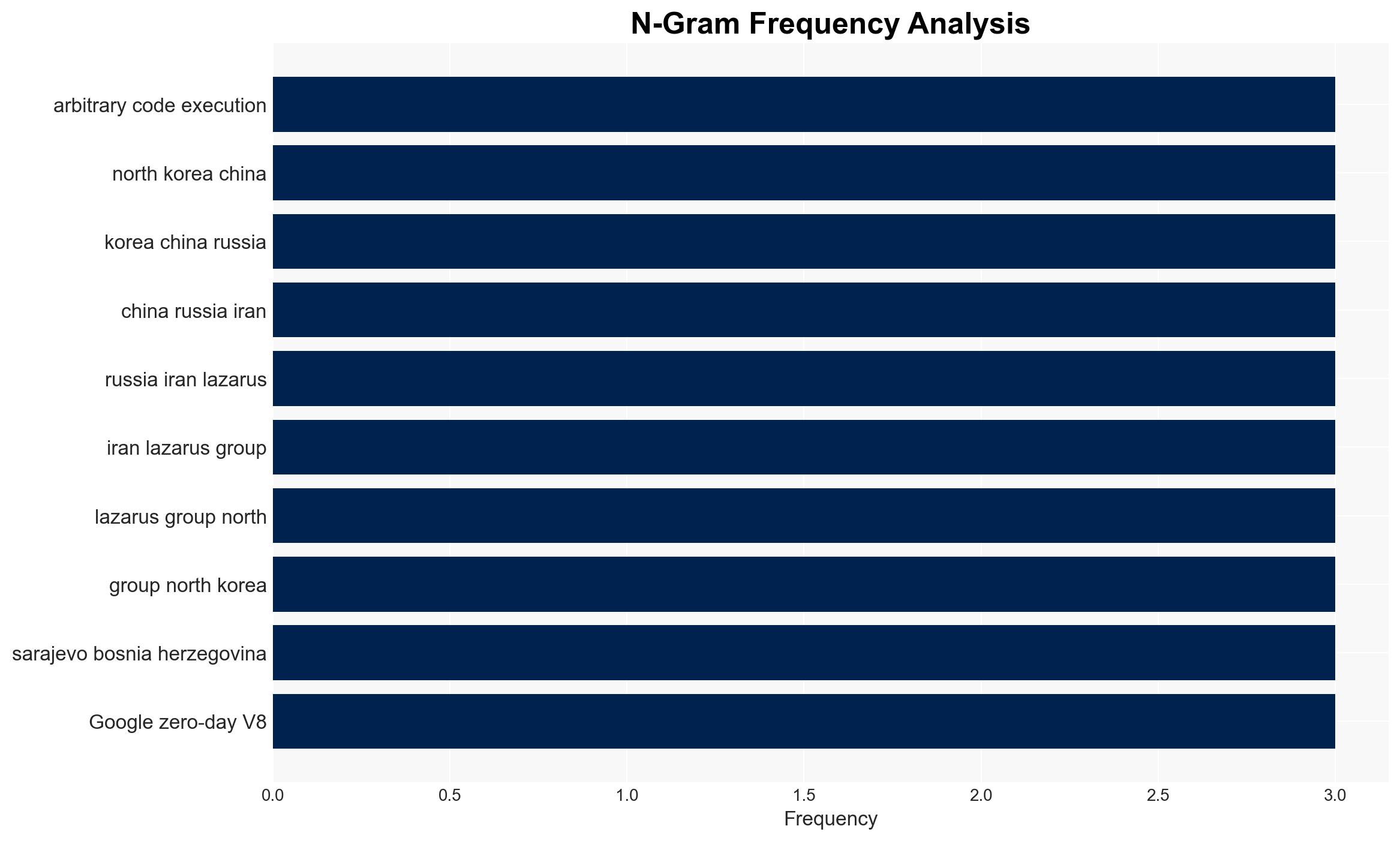Google patches worrying Chrome zero-day flaw being exploited in the wild – here’s how to stay safe – TechRadar
Published on: 2025-11-19
AI-powered OSINT brief from verified open sources. Automated NLP signal extraction with human verification. See our Methodology and Why WorldWideWatchers.
Intelligence Report:
1. BLUF (Bottom Line Up Front)
The most supported hypothesis is that state-sponsored threat actors, potentially from North Korea, China, Russia, or Iran, are exploiting a zero-day vulnerability in Google Chrome to conduct cyber-espionage or disruptive activities. Given the historical context and the nature of the vulnerability, there is a moderate to high confidence level in this assessment. Recommended actions include immediate patching of systems, enhanced monitoring for unusual activities, and collaboration with international cybersecurity agencies to mitigate risks.
2. Competing Hypotheses
Hypothesis 1: State-sponsored threat actors are exploiting the Chrome zero-day vulnerability for cyber-espionage or disruptive activities. This is supported by the involvement of Google’s Threat Analysis Group, which typically monitors state-sponsored threats, and the historical pattern of such actors exploiting similar vulnerabilities.
Hypothesis 2: Independent cybercriminal groups are exploiting the vulnerability for financial gain through ransomware or data theft. While possible, this is less supported due to the lack of direct financial indicators and the high-profile nature of the vulnerability, which typically attracts state-level actors.
3. Key Assumptions and Red Flags
Assumptions: It is assumed that the vulnerability is being actively exploited by sophisticated actors due to its complexity and potential impact. It is also assumed that the patch provided by Google effectively mitigates the threat.
Red Flags: The rapid deployment of the patch and the involvement of Google’s Threat Analysis Group suggest a significant threat level. The lack of detailed information about the attackers raises concerns about potential disinformation or misdirection.
4. Implications and Strategic Risks
The exploitation of this vulnerability could lead to significant political and economic repercussions, particularly if state-sponsored actors are involved. Potential scenarios include increased tensions between nation-states, economic disruptions due to data breaches, and a loss of public trust in digital platforms. The vulnerability could also be leveraged for misinformation campaigns, further destabilizing geopolitical relations.
5. Recommendations and Outlook
- Actionable Steps: Organizations should immediately update their Chrome browsers and implement robust cybersecurity measures. Enhanced monitoring and threat intelligence sharing with international partners are crucial.
- Best Scenario: The vulnerability is swiftly patched, and no significant exploitation occurs, maintaining stability.
- Worst Scenario: Widespread exploitation leads to major data breaches and geopolitical tensions.
- Most-likely Scenario: Limited exploitation occurs, primarily affecting targeted entities, with moderate geopolitical fallout.
6. Key Individuals and Entities
Google’s Threat Analysis Group (TAG): Responsible for monitoring and analyzing state-sponsored threats.
State-sponsored Threat Actors: Potentially from North Korea, China, Russia, or Iran.
7. Thematic Tags
Regional Focus, Regional Focus: North Korea, China, Russia, Iran
Structured Analytic Techniques Applied
- Causal Layered Analysis (CLA): Analyze events across surface happenings, systems, worldviews, and myths.
- Cross-Impact Simulation: Model ripple effects across neighboring states, conflicts, or economic dependencies.
- Scenario Generation: Explore divergent futures under varying assumptions to identify plausible paths.
Explore more:
Regional Focus Briefs ·
Daily Summary ·
Support us





